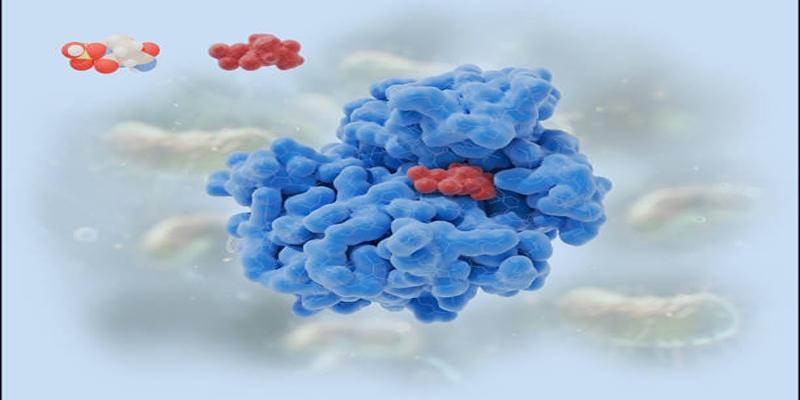How to Effectively Treat a C. Difficile Infection
Clostridioides difficile, commonly known as C. difficile, is a bacterium that can cause severe gastrointestinal infections, particularly after antibiotic use. It often leads to symptoms such as diarrhea, abdominal pain, and in severe cases, life-threatening inflammation of the colon. Effective treatment is essential to prevent complications and recurrence. This guide provides a comprehensive overview of the strategies used to treat C. difficile infections, including medical interventions and preventive measures.
Understanding C. Difficile Infection

C. difficile functions as a bacterial entity which induces colonic inflammation which medical professionals name as colitis. The bacteria primarily infects people whose microbiome has become unbalanced specifically due to antibiotic medications that minimize protective bacterial species which normally control C. difficile growth. Healthcare institutions like hospitals and nursing homes along with other treatment centers have the highest instance of C. difficile infection due to their extensive use of antibiotics. Risk factors exist for individuals above age 65 as well as those who have immune system weaknesses and patients who need prolonged hospital time or antibiotic treatment.
The symptoms of C. difficile infection range from mild diarrhea to severe abdominal cramping, fever, nausea, and dehydration. Patients affected with severe C. difficile infections can face dangerous health situations including pseudomembranous colitis and toxic megacolon and bowel perforation. It is imperative to identify C. difficile early since proper management through timely intervention helps prevent disease progression and transmission to others.
Diagnosis
Early and accurate diagnosis of C. difficile infection is crucial for effective treatment and preventing further transmission. Below are the key methods and approaches used in its diagnosis:
Patient History and Clinical Symptoms
A detailed patient history is a critical first step in diagnosing C. difficile infection. Healthcare providers typically look for recent antibiotic usage, hospitalization, or other risk factors associated with the development of the infection. Common clinical symptoms like persistent diarrhea, abdominal pain, and fever can help guide the initial investigation and prompt further diagnostic testing.
Stool Sample Testing
Stool testing is the most definitive method for diagnosing C. difficile. Common tests include enzyme immunoassays (EIA) for detecting toxins A and B, polymerase chain reaction (PCR) testing for identifying the toxin-producing gene, and glutamate dehydrogenase (GDH) assays for detecting the bacterial antigen. Combining multiple stool tests often delivers the most accurate results.
Endoscopic Examination
Endoscopy may be used in severe or ambiguous cases to provide a direct view of the colon and assess the extent of the infection. Findings such as pseudomembranes or inflammation confirm the presence of more severe forms of C. difficile infection, such as pseudomembranous colitis.
Imaging Studies
Imaging studies, including abdominal X-rays or CT scans, can help identify complications like toxic megacolon, bowel perforation, or extensive colonic distension. These methods are typically utilized when the infection presents with severe or life-threatening symptoms.
Differential Diagnosis
Since diarrhea and abdominal pain can result from various conditions, differential diagnosis is essential to rule out other causes such as inflammatory bowel disease (IBD), ischemic colitis, or food poisoning. This ensures appropriate treatment is targeted to C. difficile specifically.
Treatment Options

Treatment for C. difficile infection generally involves a combination of targeted antibiotic therapy and supportive care. The approach depends on the severity of the infection and patient-specific factors.
Antibiotic Therapy
The primary treatment for C. difficile involves antibiotics that specifically target the bacteria. Commonly used antibiotics include vancomycin and fidaxomicin, which are effective in eradicating the infection while preserving gut flora as much as possible. For mild to moderate cases, oral antibiotics are sufficient, while severe cases may require higher dosages or prolonged treatment. Physicians tailor antibiotic regimens based on factors such as previous infections or patient tolerance to medication.
Supportive Care
Supportive care includes measures to manage symptoms and prevent complications. Maintaining hydration is crucial, as diarrhea from C. difficile infection often leads to significant fluid loss and electrolyte imbalances. Oral rehydration solutions or intravenous fluids may be administered in severe cases. Patients are also advised to avoid anti-diarrheal medications, as these can worsen the condition by trapping toxins in the colon.
Fecal Microbiota Transplant (FMT)
For patients with recurrent or severe infections, fecal microbiota transplantation (FMT) has emerged as an effective treatment option. FMT involves transplanting stool from a healthy donor into the patient’s colon to restore the natural gut microbiome. This approach significantly reduces recurrence rates and promotes long-term gut health. FMT is typically recommended after standard antibiotic treatments have failed.
Surgery
Surgery is considered for C. difficile infections that result in complications like toxic megacolon or bowel perforation. Colectomy, or surgical removal of the colon, may be necessary to save the patient’s life in severe cases. Surgical intervention is generally reserved as a last resort when all other treatments have proven unsuccessful.
Prevention
Preventing C. difficile infections involves targeted strategies to reduce risk factors and promote a healthy environment. Key prevention measures include:
- Hand Hygiene: Proper and frequent handwashing with soap and water is vital, especially in healthcare settings, as alcohol-based hand sanitizers may not be effective against C. difficile spores. This helps minimize the spread of the bacteria.
- Antibiotic Stewardship: Limiting the overuse and misuse of antibiotics helps reduce the chances of disrupting healthy gut microbiota, thereby decreasing the risk of C. difficile infections.
- Environmental Cleaning: Thorough disinfection of surfaces and medical equipment with agents effective against C. difficile spores is necessary to limit environmental contamination, particularly in hospitals and long-term care facilities.
- Isolation Precautions: Ensuring that infected patients are kept in isolated spaces can help prevent the bacteria from spreading to others, particularly in communal healthcare environments.
Managing Recurrences
Recurrences of C. difficile infections can be challenging to address, requiring a multifaceted approach. Below are key strategies for managing recurrent infections:
- Probiotic Supplementation: Evidence suggests that specific probiotics might support gut health and add a protective layer against further C. difficile growth, though results may vary by individual.
- Patient Education and Follow-Up: Informing patients about proper hygiene, strict medication adherence, and recognizing early symptoms of recurrence ensures proactive management and reduces the risk of severe complications.
Conclusion
C. difficile infection is a significant healthcare concern that requires prompt diagnosis and appropriate treatment to prevent complications and reduce recurrence rates. A combination of targeted antibiotics, supportive care, and preventive measures can effectively manage the infection. New developments in treatments such as FMT offer promising options for patients with recurrent or severe infections. Proper hand hygiene, antibiotic stewardship, and environmental cleaning are essential strategies in preventing the spread of this bacteria. Patient education and follow-up play an integral role in managing recurrent infections.












